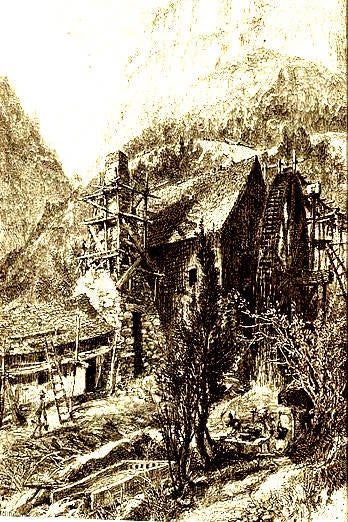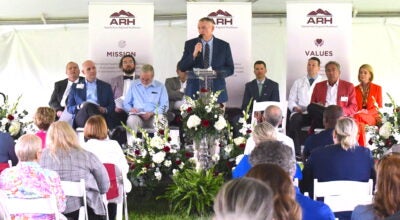‘An Iron Will’ Festival to commemorate the 200th anniversary of the Newlee Iron Furnace
Published 1:28 pm Monday, October 14, 2019

Photos submitted
During “An Iron Will” festival, the community will step back in time and be able to immerse themselves in another fascinating chapter of the area’s rich history.
When visitors attend Cumberland Gap National Historical Park’s Oct. 18-19 “An Iron Will” festival, they will step back in time and be able to immerse themselves in another fascinating chapter of the area’s rich history. Two hundred years ago in 1819, an iron furnace was built below what is known as Gap Cave, utilizing for its operation the stream from the cave.
This new park offering, being held in the town of Cumberland Gap, Tenn., is a “jubilant celebration welding together the park, the town, area residents, and visitors with history, discovery, and fun,” said Park Superintendent Charles Sellars. During this same weekend, the town will also be hosting its annual “Geneology Jamboree and Pioneer Days.”
The family-friendly free event includes a live modern iron pour by staff from Sloss Furnaces National Historic Landmark in Birmingham, Alabama; a charcoal making demonstration; cast iron pattern making; 11 a.m., 1 p.m., and 3 p.m. performances by historical re-enactor Elizabeth Lawson — who portrays an enslaved African American in a world of iron and Civil War; and the opportunity to meet iron furnace owner “John Newlee” and “Dr. Morrison,” physician for the workers of the iron furnace.
Youth will be able to engage in a scavenger hunt and help Skillet the Pig find the truth about pig iron; youth will be rewarded with an iron piglet upon successful completion of the scavenger hunt. The scavenger hunt workbook can be picked up at Welcome Tables located at either end of Colwyn Avenue, the main street in Cumberland Gap. For a small fee, visitors will be able to make their own iron creation.
On his historic journey in 1750 through the now famed mountain pass, Dr. Thomas Walker made note of a spring coming from a cave. In his journal, he noted “The spring is sufficient to turn a mill.” 69 years after Dr. Walker penned his entry, the blast furnace was built. Large, sandstone blocks were used from nearby and fire brick was used to line the inside of the furnace which was used to smelt iron.
Iron ore was mined nearby, limestone was added in the process, and firewood was made into charcoal for use as fuel. Water from the cave stream powered large bellows and a massive hammer mill.
Each day 625 bushels of charcoal (approximately 52 trees), 6 1/4 tons of iron ore, and 1,563 pounds of limestone were used to produce approximately 3 tons of iron. Iron was sold to local blacksmiths and also shipped in the form of ingots or “pigs” down the Powell River to Chattanooga.
“An Iron Will” is made possible by a very generous donation from “America’s National Parks,” a not-for-profit cooperating association that promotes the public’s support of America’s national parks and other public trust partners.
For more information, call Cumberland Gap National Historical Park at 606-248-2817 or www.nps.gov/cuga.






